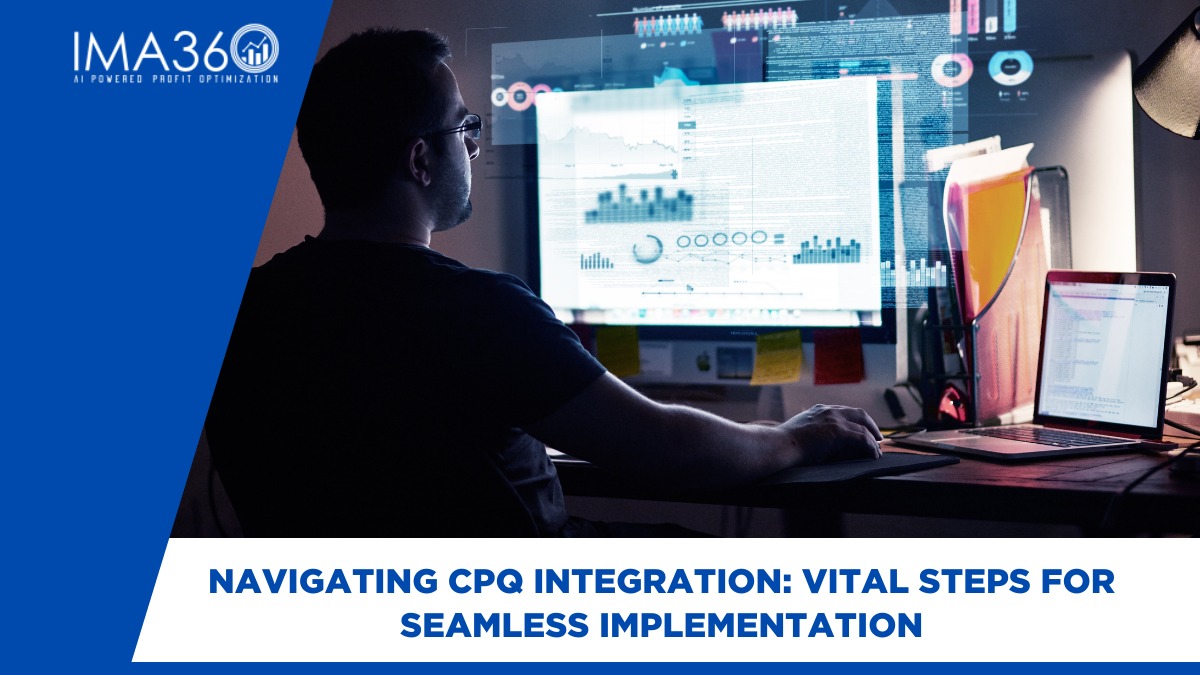CPQ or Configure Price Quote is a process that is followed by the sales department to configure products. Determine prices, and create a quote. CPQ is generally applicable for products and services that come with a multitude of features. For example, when a customer goes to purchase a car – the price of the car they would like to buy may vary depending on the color, model, specifications, and any extras that an individual may pick while purchasing. CPQ ensures that the customer gets the right price for the selected configuration.
CPQ is thus a software that streamlines complex pricing models to create quotes and proposals that are error-free. It also offers discounting options, pricing guidance, and configuration validation to ensure that the quote is not just profitable but competitive, too. It can easily be integrated with most business tools, CRM systems, and ERP solutions to offer a seamless sales experience. Let us understand about CPQ software and how to implement it seamlessly:
Understanding CPQ Software:
CPQ software transforms the sales process by automating important tasks related to quoting, pricing, and product configuration. This powerful tool allows sales teams to streamline their workflows, saves their valuable time and resources, and simultaneously increases business revenue. With CPQ software, sales representatives can quickly and accurately generate quotes for customers. It eliminates the need for manual calculations and reduces the risk of errors.
One key feature of CPQ software is its ability to configure products according to customer specifications. Sales teams can easily select various product options, features, and customizations. To ensure that each quote is tailored to the customer’s unique needs. This flexibility allows for personalization and enhances the overall customer experience.
CPQ software also enables sales teams to implement dynamic pricing strategies depending on several factors such as customer segmentation, product bundling, discounts, and promotions. Using advanced pricing algorithms and real-time data, sales representatives can adjust pricing to maximize profitability while remaining competitive in the market.
Moreover, software enables seamless integration with other essential business systems, such as CRM and ERP platforms. This integration ensures data consistency across all departments and enables a consistent end-to-end sales process.
This software empowers sales teams to work more efficiently, close deals faster, and ultimately drive business growth. By automating quoting, pricing, and product configuration tasks, CPQ software enables organizations to deliver a superior customer experience while maximizing profitability.

Key Components of CPQ Software Implementation:
Implementing CPQ software involves several key components to ensure a successful integration and maximize its benefits for the organization. Let us explore some of these components in detail:
Assessment
The first step in implementing CPQ software is conducting a comprehensive assessment of the organization’s sales processes, workflows, and requirements. This assessment helps identify problematic points, inefficiencies, and areas for improvement that CPQ software can address. Assessment is not just about understanding current processes; it also involves evaluating the organization’s readiness for CPQ implementation. This may include factors such as technological infrastructure, data quality, and organizational culture. Additionally, stakeholders from various departments should be involved in the assessment process to ensure that all perspectives are considered and that the CPQ solution meets the needs of different user groups. By conducting a thorough assessment, businesses can lay the foundation for a successful CPQ implementation.
Data Preparation
Data preparation is crucial for the successful implementation of CPQ software by CPQ software providers. This involves cleansing, organizing, and migrating data from existing systems, such as CRM and ERP platforms, to ensure data accuracy and consistency within the CPQ system. CPQ software vendors emphasize the importance of defining data models, rules, and structures to support product configuration, pricing, and quoting processe. It also includes the identification and resolution of any data inconsistencies or duplicates that may exist across different systems. This process may involve collaboration between IT teams, data analysts, and business stakeholders to ensure that the CPQ system is fed with high-quality data that supports accurate quoting and pricing decisions.
Integration with Existing Systems
Integration with existing systems is significant to ensure seamless data flow and interoperability between software and other business applications. This integration may involve connecting CPQ software with CRM, ERP, inventory management, and pricing databases to access relevant data and streamline processes. Application Programming Interfaces or API and middleware solutions are often used to simplify this integration.
Configuration and/or Customization
CPQ software needs to be configured and tailored to suit the specific needs and requirements of the organization. This involves customizing the software to support unique product offerings, pricing models, discount rules, approval workflows and user interfaces. Configuration may include setting up product catalogs, pricing rules, quote templates and user roles based on the organization’s preferences.
Testing and Validation
Thorough testing and validation are essential to ensure that the CPQ software functions as intended and meets the organization’s requirements. This involves conducting various tests such as integration testing, regression testing, unit testing, and user acceptance testing to identify and resolve any issues or discrepancies. Validation ensures that the CPQ system accurately calculates prices, generates quotes, and supports complex product configurations without errors.
Training and Adoption
Effective training and user adoption are significant for the successful implementation and utilization of the best CPQ software. Training programs should be tailored to educate users on how to use the software effectively, navigate the interface, create quotes, and use its advanced features. User adoption initiatives, such as workshops, tutorials, and ongoing support, encourage user engagement and ensure that sales teams embrace the new technology.
Ongoing Support
Once CPQ software is implemented, continuous support and maintenance are required to address any issues, update configurations, and optimize performance. This may involve providing technical support, troubleshooting assistance, software updates, and enhancements to address evolving business requirements and ensure the continued success of the CPQ system. The organizations should establish clear channels of communication for users to report any issues or concerns they encounter while using the CPQ software. Routine monitoring and analysis of system performance can help identify potential issues proactively and implement corrective measures to prevent disruptions to sales operations. Moreover, periodic reviews and assessments of the CPQ system’s performance and user feedback help in making planned decisions for future enhancements and improvements.
Implementing CPQ software requires careful planning, execution and ongoing support to maximize its benefits and drive business growth. By addressing above mentioned key components organizations can successfully leverage CPQ software to streamline sales processes, improve efficiency and enhance customer satisfaction.
Conclusion
CPQ software solution is transformative for modern sales teams that helps them in optimizing quoting processes and elevates overall sales performance. By following meticulous implementation steps, businesses can seamlessly integrate CPQ into their operations to drive efficiency and achieve business objectives. With CPQ’s ability to streamline negotiations and facilitate the conversion of proposals into sales orders, sales teams can navigate complex sales cycles with confidence to forge stronger customer relationships and help the business achieve sustained growth.

Anuj Gupta has 25+ years of experience in software development, helping 20+ Fortune 500 companies optimize pricing, promotions, and rebates. He founded IMA360 to address the lack of industry-configured solutions, enabling faster market entry and higher profitability. Through tailored SaaS tools, he drives margin optimization and operational efficiency across sectors







